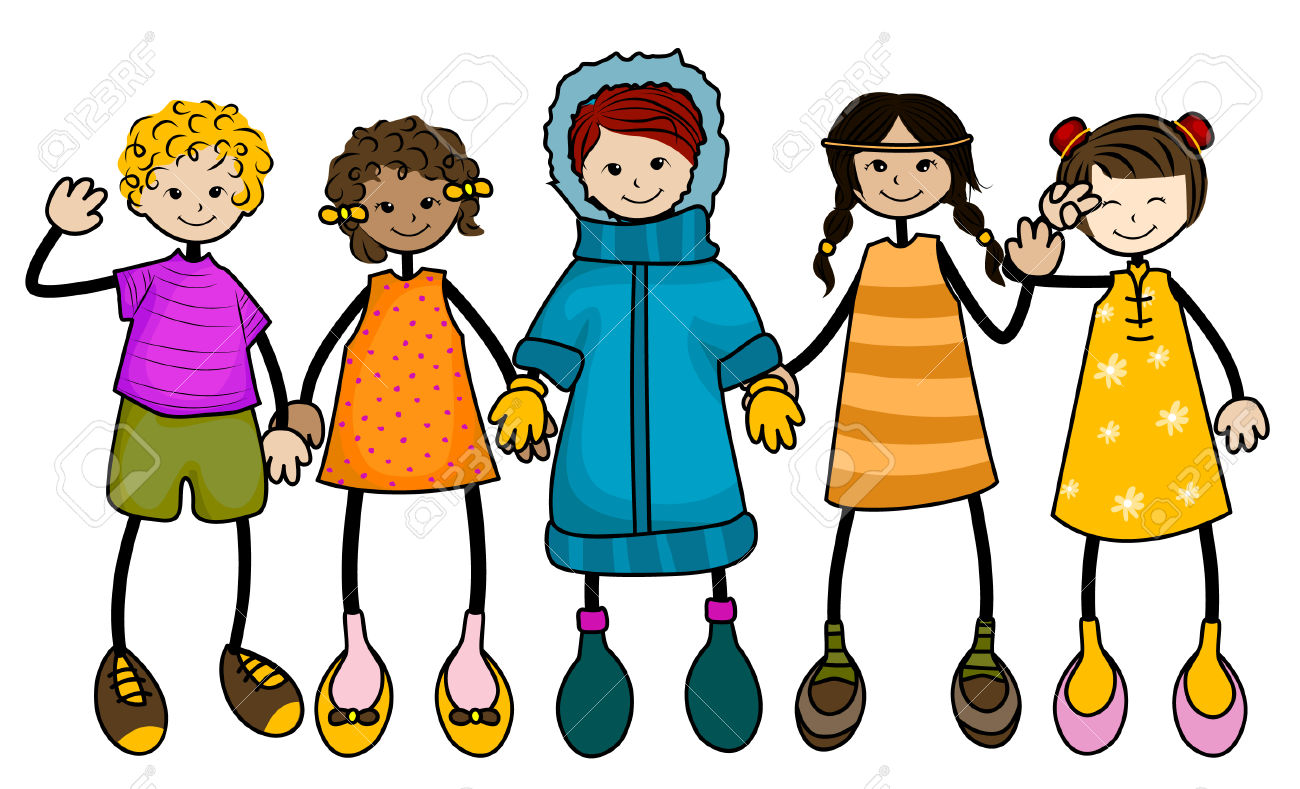In an increasingly interconnected world, the notion of cultural diversity has emerged as a pivotal theme, particularly in the realm of education and visual representation. The use of cultural diversity kids clip art serves as a significant tool for fostering inclusivity and understanding among young learners. Through engaging visual elements, these illustrations play a vital role in shaping perspectives and igniting curiosity about different cultures.
At the core of cultural diversity clip art is the representation of varied backgrounds, traditions, and identities. These images often depict children from different ethnicities, engaging in activities that highlight their unique customs and practices. By integrating such visuals into educational materials, educators can create a more dynamic and relatable learning environment. The richness of cultural diversity promotes empathy and an appreciation for the myriad of experiences that shape our global community.
Firstly, cultural diversity kids clip art acts as a catalyst for sparking curiosity. Children are naturally inquisitive; they often ask questions about the world around them. When presented with diverse imagery, they may wonder about the customs, languages, and lifestyles of their peers. This curiosity can lead to more profound discussions about cultural heritage, traditions, and societal values. It beckons children to explore questions such as, “Why do they wear those clothes?” or “What is the significance of that festival?” Thus, the illustrations serve two purposes—they captivate attention and encourage critical thinking.
Moreover, visuals have a unique capacity to transcend language barriers. In classrooms that encompass students from various linguistic backgrounds, clip art depicting cultural diversity can play a vital role in communication. It allows for a shared understanding that might elude verbal explanations. Seeing children of different cultures represented visually can help all students relate to one another, fostering a sense of belonging and unity. This becomes particularly pertinent in multicultural classrooms, where the dynamics of social interactions can be profoundly influenced by understanding and acceptance.
Educational institutions are increasingly recognizing the importance of multicultural education in their curricula. Incorporating cultural diversity kids clip art into lesson plans is an effective strategy to achieve this. For instance, when teaching about global festivals, educators can use imagery to illustrate how various cultures celebrate. Children can visually appreciate the differences and similarities in traditions. This not only helps them learn about different cultures but also instills a sense of respect for diversity.
Additionally, the artistic element inherent in clip art engages students’ imaginations. Children are often visual learners; complex ideas can become more accessible through appealing images. When they interact with colorful and vibrant representations of their peers, students may feel more inclined to participate in discussions about diversity. Those who may previously have considered cultural differences daunting or confusing might find themselves more open to learning and engaging with others. This newfound perspective is invaluable as it can reshape their understanding of community and acceptance.
However, it is paramount to approach the creation and use of cultural diversity clip art with sensitivity and accuracy. The risk of stereotyping or misrepresentation looms large if care is not taken in the design process. To truly honor cultural diversity, clip art must reflect the authentic representations of different cultures, avoiding caricatures or clichés. Engaging artists from various backgrounds to create these illustrations can greatly improve the authenticity and relatability of the imagery used in educational settings.
Furthermore, educators and caregivers should encourage children to create their interpretations of cultural diversity through art. Such activities not only help reinforce lessons learned through clip art but also deepen their understanding of their own identities and cultural backgrounds. This incorporation of self-expression allows students to draw parallels between their experiences and those of their peers, enhancing empathy and connection.
The implications of incorporating cultural diversity kids clip art extend beyond mere classroom experiences. In a broader context, fostering appreciation for various cultures among young people can contribute to a more inclusive society. As these children grow into adults, their understanding and acceptance of multiculturalism may shape the future of communities, workplaces, and societies. The seeds of curiosity and empathy planted in early education can yield a generation that values collaboration and inclusivity in a globalized world.
In conclusion, the role of cultural diversity kids clip art is multifaceted. It serves not only as an artistic representation but as an educational instrument that piques curiosity and encourages empathy. By promoting understanding and acceptance of different cultures, these visuals promise a shift in perspective, laying the groundwork for a more inclusive future. As we continue to navigate the complexities of our global society, embracing the richness of cultural diversity through creative expressions will undoubtedly enhance our collective journey towards unity and understanding.
